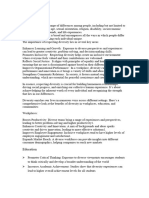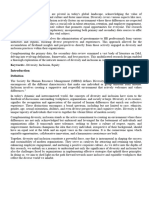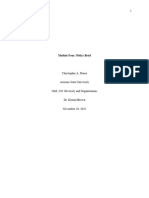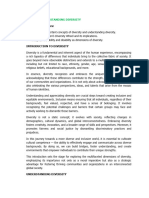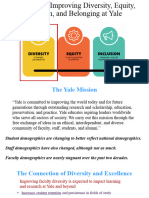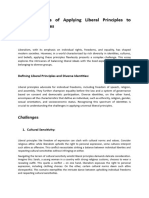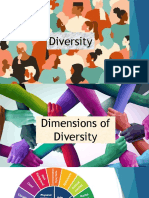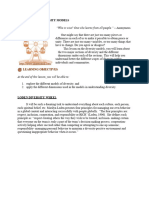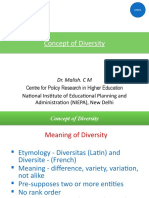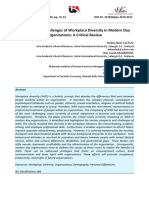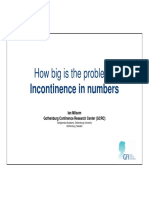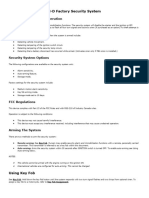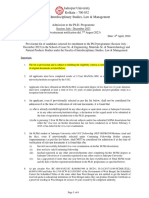Title: Normalizing: Understanding the Importance of Embracing Diversity
Introduction
In today's interconnected world, the concept of normalizing has gained significant prominence,
especially in discussions surrounding diversity, equity, and inclusion. Normalizing refers to the process
of making something "normal" or widely accepted within a particular social or cultural context. In this
article, we will explore the multifaceted aspects of normalizing, its impact on individuals and
communities, and why embracing diversity is crucial for fostering a more inclusive and tolerant
society.
I. The Evolution of Normalizing
To comprehend the significance of normalizing, it's essential to trace its evolution throughout history.
Societal norms are dynamic, shaped by cultural, political, and economic forces. What was considered
normal in the past may not align with contemporary values. Examining the evolution of normalizing
sheds light on how societies adapt to changing perspectives and redefine what is acceptable.
A. Cultural and Historical Context
The cultural and historical context plays a pivotal role in shaping societal norms. In various epochs,
societies have normalized practices that, in hindsight, might seem regressive or discriminatory.
Understanding these historical shifts enables us to appreciate the fluid nature of normalizing and its
role in societal progress.
B. Changing Perspectives on Diversity
As societies become more interconnected, the need to embrace diversity becomes increasingly
apparent. Normalizing diversity involves acknowledging and accepting differences in race, ethnicity,
gender, sexual orientation, and other identity markers. The shift in perspectives on diversity
challenges traditional norms, prompting a reevaluation of what is considered "normal."
II. The Impact of Normalizing on Individuals
Normalizing has a profound impact on individuals, influencing their self-perception, mental health,
and overall well-being. Examining how societal norms affect individuals provides insights into the
importance of promoting inclusive environments.
A. Self-Perception and Identity
Societal norms can significantly influence how individuals perceive themselves. When certain traits or
characteristics are stigmatized, individuals may internalize these negative perceptions, leading to a
distorted self-image. Normalizing diversity helps individuals embrace their unique identities and
fosters a sense of belonging.
B. Mental Health Implications
The pressure to conform to societal norms can contribute to mental health challenges. Those who
deviate from established norms may face discrimination, isolation, or prejudice, leading to stress and
anxiety. Normalizing inclusivity and diversity creates a supportive environment that promotes positive
mental health outcomes.
III. The Role of Media in Normalizing
Media plays a crucial role in shaping societal norms and influencing public perception. Examining how
media contributes to the process of normalizing provides insights into its power and responsibility.
�A. Representation in Media
The media has the power to shape narratives and influence public opinion. Normalizing diversity in
media involves accurate and positive representation of various identities. Examining how different
groups are portrayed in media can reveal the progress made and highlight areas where improvement
is needed.
B. Challenging Stereotypes
Stereotypes perpetuated by media can contribute to the normalization of biased views. Challenging
these stereotypes through diverse storytelling and authentic representation is essential for reshaping
societal norms. Media has the potential to be a powerful force for change by promoting inclusivity
and challenging preconceived notions.
IV. Building Inclusive Communities
Normalizing diversity is not only about changing perceptions on an individual level but also about
fostering inclusive communities. Analyzing initiatives that promote inclusivity at the community level
provides valuable insights into creating environments where everyone feels accepted.
A. Educational Initiatives
Education plays a vital role in shaping the perspectives of future generations. Normalizing diversity in
educational curricula helps challenge stereotypes and prejudices from an early age. Examining
successful educational initiatives provides a roadmap for creating inclusive learning environments.
B. Workplace Diversity and Inclusion
In the professional sphere, normalizing diversity is crucial for creating equitable workplaces.
Companies that prioritize diversity and inclusion benefit from a variety of perspectives, leading to
innovation and improved decision-making. Analyzing successful diversity and inclusion initiatives in
the workplace provides practical insights for other organizations.
V. Overcoming Challenges in Normalizing
While the importance of normalizing diversity is evident, there are challenges that must be addressed
to facilitate meaningful change. Understanding these challenges and exploring strategies to overcome
them is essential for creating a more inclusive society.
A. Resistance to Change
Resistance to change is a common obstacle in normalizing diversity. Examining the reasons behind
this resistance and implementing strategies to address it is crucial for overcoming inertia and creating
positive societal shifts.
B. Intersectionality and Inclusivity
Normalizing diversity requires a nuanced understanding of intersectionality, recognizing that
individuals hold multiple, intersecting identities. Failing to address intersectionality can result in
incomplete efforts to normalize diversity. Strategies that prioritize inclusivity and intersectionality
contribute to more comprehensive and effective change.
VI. Looking Ahead: The Future of Normalizing
As society continues to evolve, the future of normalizing holds both challenges and opportunities.
Exploring emerging trends and considering the role of future generations in reshaping societal norms
provides a forward-looking perspective on the importance of normalizing diversity.
�A. Emerging Trends in Diversity and Inclusion
Analyzing current trends in diversity and inclusion can provide insights into the trajectory of
normalizing. From technological advancements to changing demographics, understanding these
trends helps anticipate future challenges and opportunities.
B. The Role of Future Generations
The attitudes of future generations will play a pivotal role in shaping societal norms. Examining how
younger generations perceive and contribute to the process of normalizing diversity provides a
glimpse into the potential for sustained progress.
Conclusion
In conclusion, normalizing diversity is a dynamic and ongoing process that shapes societal norms,
influences individual well-being, and contributes to the creation of inclusive communities.
Understanding the historical context, impact on individuals, role of media, and challenges involved in
normalizing diversity is essential for fostering positive change. By prioritizing inclusivity, challenging
stereotypes, and embracing the richness of diversity, societies can build a more tolerant and
equitable future.





